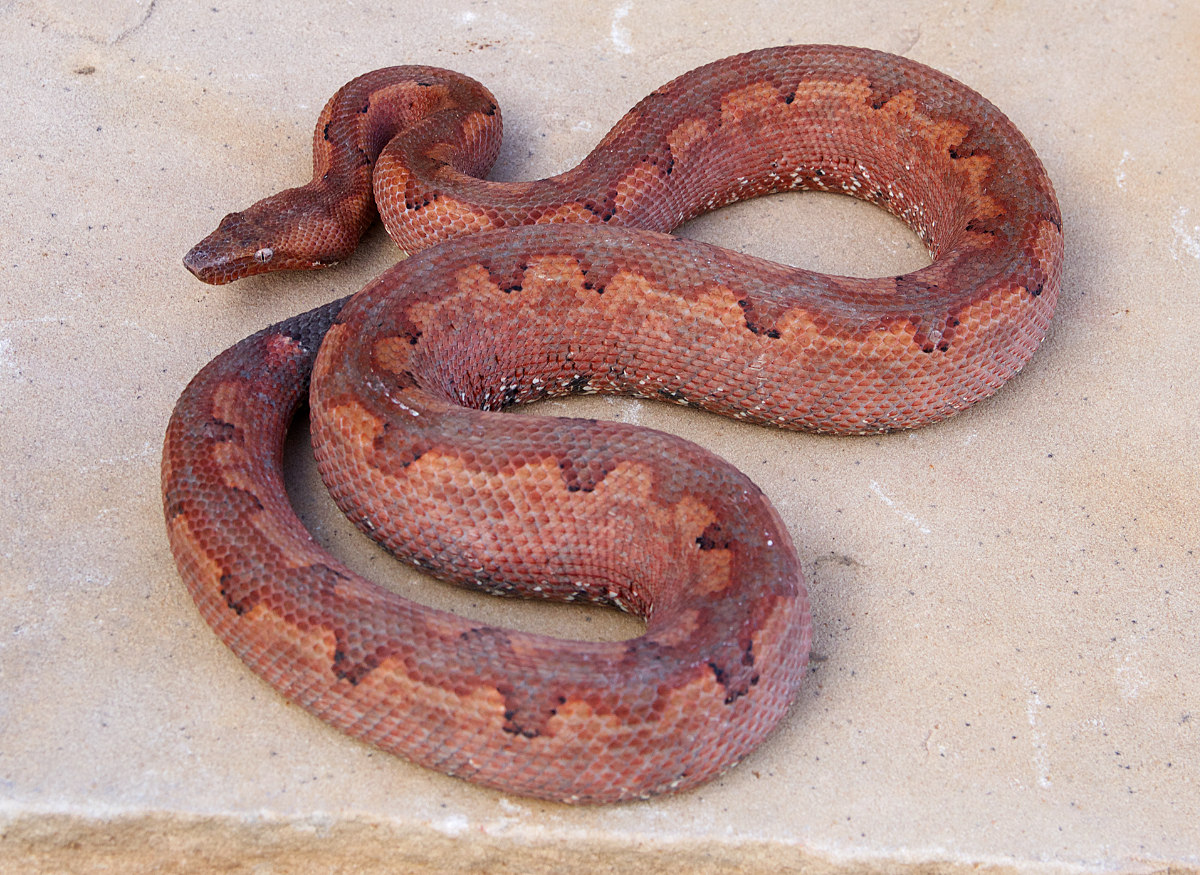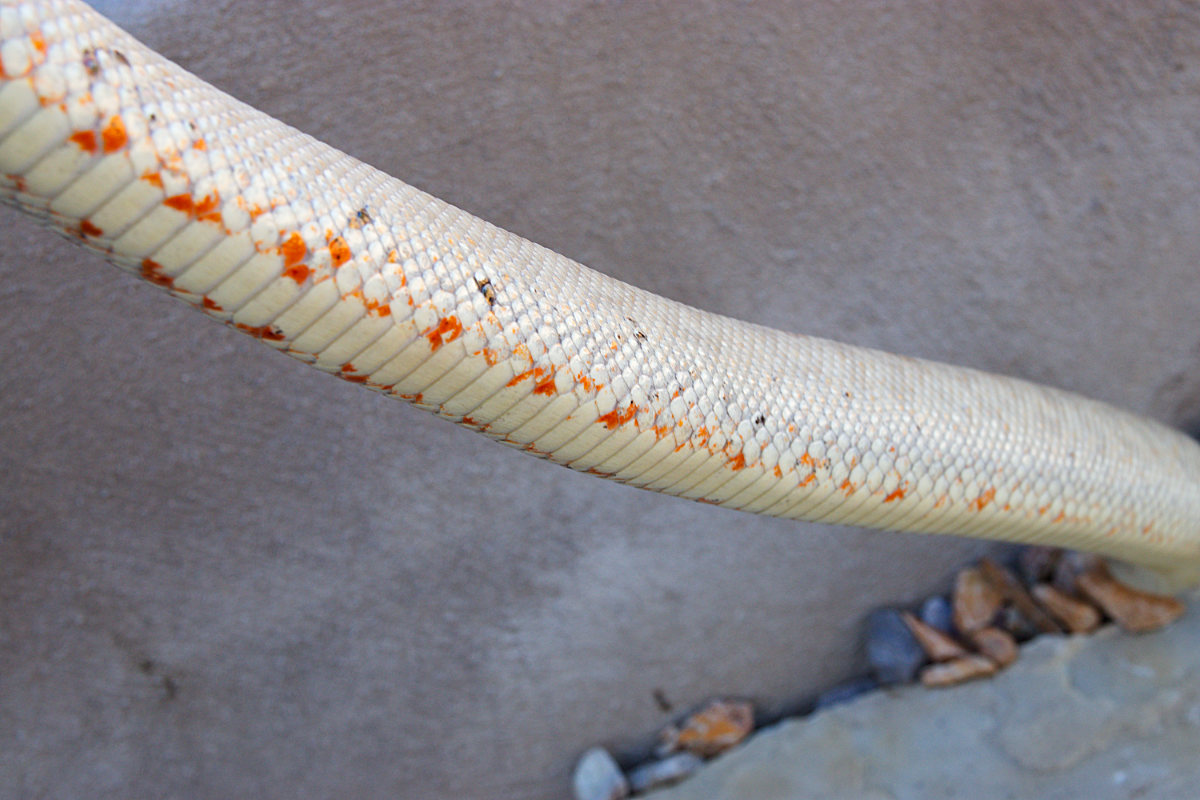


 |
|
Solomon
Island Ground Boa - Virgin Pair 2
Contrary to
popular belief, there is no
single "Solomon Island." There
are the Solomon Islands
however, a vast area of the Western Pacific
spanning over
one thousand
islands including Eastern Papua
New Guinea. Obtaining Solomon
Island Boas with any type of
locality provenance is a very
difficult to impossible
proposition. Assigning one of
these boas to any specific
island based on color is
problematic as these creatures
can occur in a wide array of
color and patterns - often on
the same island. Some
populations, this one for
example, have a highly
developed, chameleon like
ability to change color and
shading based primarily on the
color of the substrate they are
kept on with a secondary
emphasis based on mood,
temperature, etc. - and other
factors known only to
themselves.
The
Speckling
Project
A few years back I had an
opportunity to acquire a group
of these boas that came from the
same importation and based on
what I could see visually, it
looked like these animals were
possibly collected very near to
one another, probably from the
same island. The clincher was
the unique
pattern/color of ventral
surface
(belly) and lower sides. I had
never seen anything like it in
over 30 years of looking at
these boas. I believe there is a
high probability that the
animals composing this group
were collected from the same
island, and more than likely,
one of the smaller islands. Take
this for what it is. This is not
any kind of real provenance but
for our future goals it was
deemed important and an
exceptional opportunity.
We've never
seen ventral and lower sides
colored and patterned like those
in this group. The ventral and
sides are like a mosaic of
brilliant red, black and white
dots and splashes. It is a
gorgeous trait. As this was more
than likely a polygenic trait;
our project goal was to
selectively breed the group of
four and expand upon the wild
type speckling already in place.
A similar approach has been used
while selectively breeding
Chihuahuan Lampropeltis
knoblochi to great effect.
If you examine sigbm6030 closely
you can see areas where the
ventral/lateral speckling has
already broken out dorsolaterally
totally without human
intervention. I would imagine
this has happened naturally in
the wild many times over and is
just waiting to be "captured"
through breeding by some
enterprising boaphile.
These boas were imported several
years ago as juveniles and grown
the slow, Vivid way. There have
been zero issues with the group.
The males will go off feed
during what I presume to be the
winter breeding cycle. Otherwise
these boas must be fed
judiciously to keep their body
weight down. I have broken
this group of 4 into 2 pairs
for sale. However, if
at all possible it would be most
advantageous to keep the group
of 4 together for the obvious
genetic "leg up" you get with a
larger beginning sample size.
All of the animals are unrelated
to the best of my knowledge.
sigbm6059
Sex:
male
Weight:
259 g
Length: 30 in — 76.20 cm
Diet:
frozen/thawed small mice
sigbf6107
Sex:
female
Weight: 745 g
Length: 41in — 104.14 cm
Diet:
frozen/thawed medium mice
$900 pr
Color
Note
The coloration and to a lesser extent, the
patterning on this particular strain of sigb
is highly dependent upon the color of the
substrate they are kept on. The
female pictured above (sigbf6107) can undergo rather
extreme color changes. Keeping in mind that this
lovely boa is nearly solid white when at its
happiest, there was one frantic hour
when this girl was thought to have escaped - when it
had actually never moved, having morphed into a
distinctly striped, black and ash gray snake with many
pattern elements that were "not there" before. The
ventral/lateral speckling is mostly white on this boa
and shows rather poorly against her light background.
You can this speckling best on her lower sides in the
full view photo. They appear visible here because her
background color tone during this photo is a bit
darker than usual. There is some very light, bright
orange speckling, very little black speckling at all
and the white speckling on the ventrals simply
disappears into the white background of the ventrals.
When this snake becomes very pale, the lateral
speckling disappears altogether.
|







